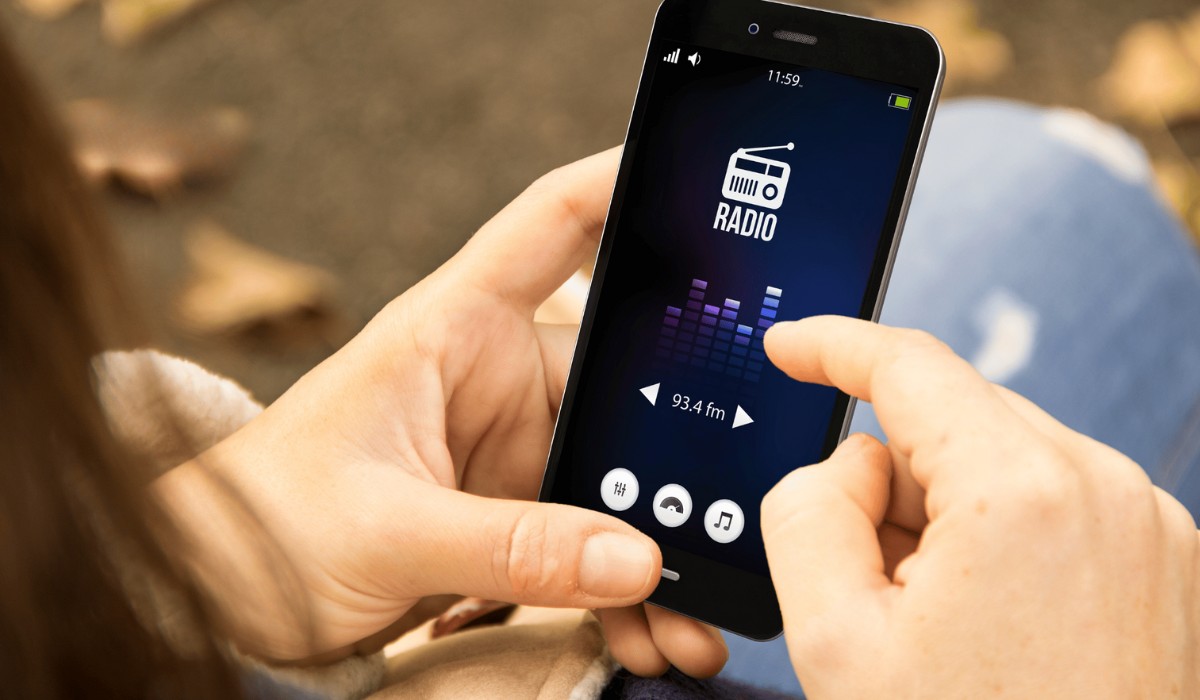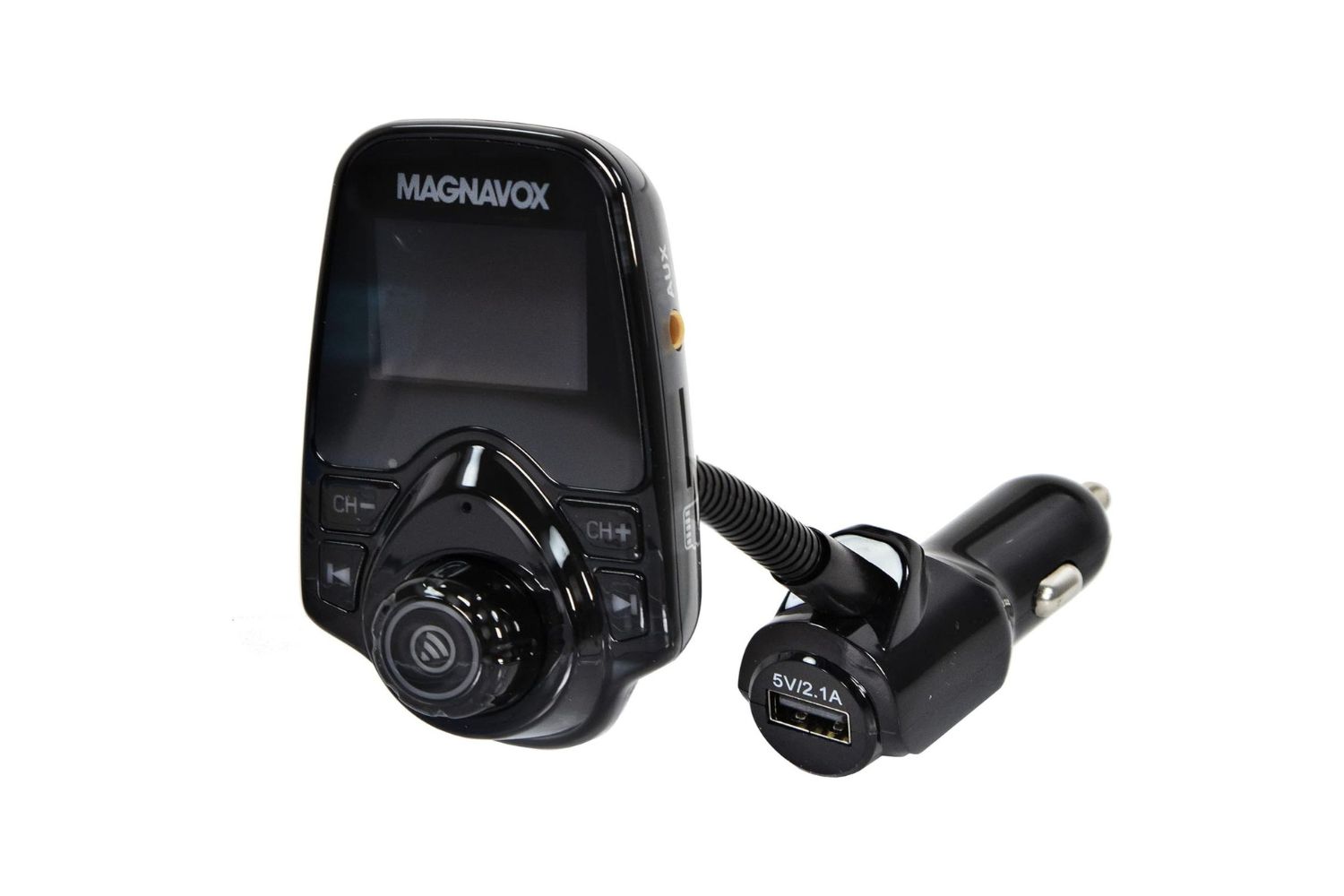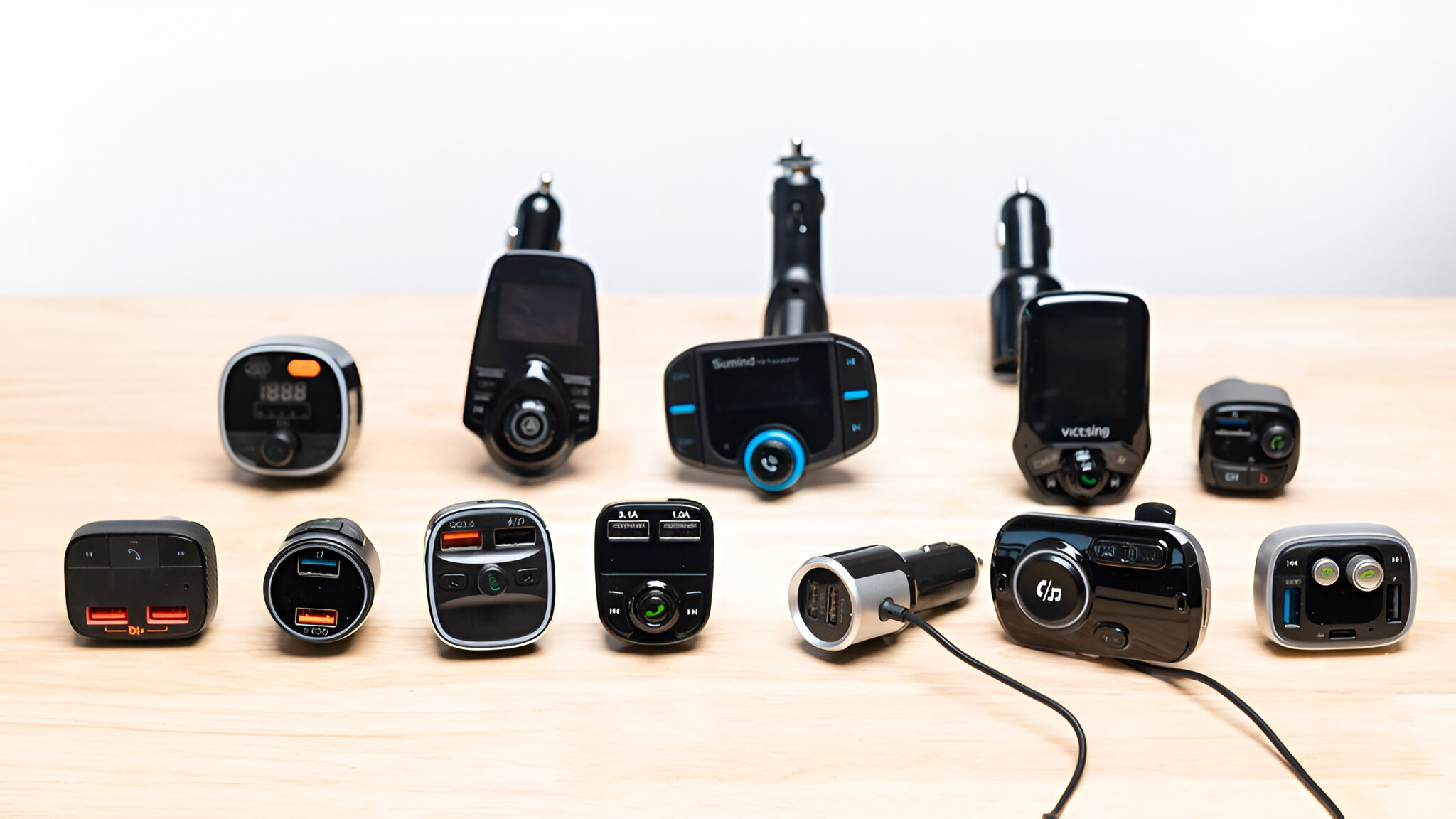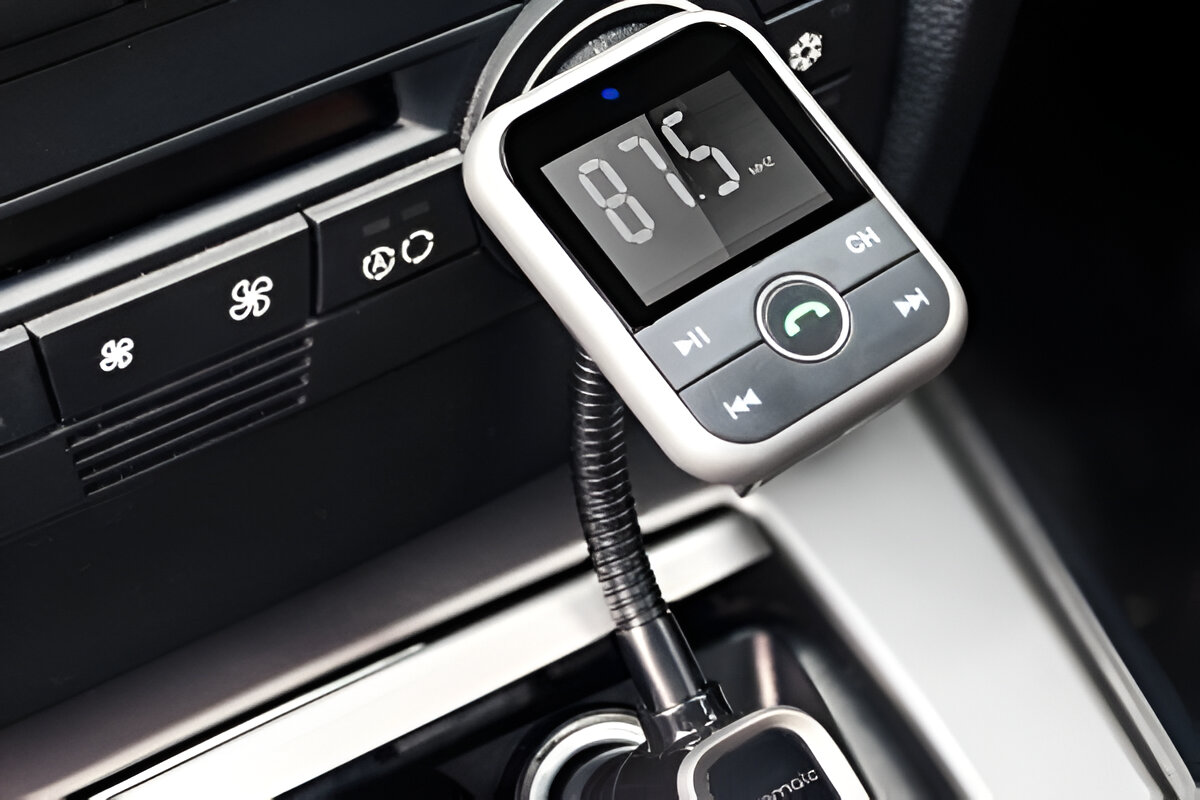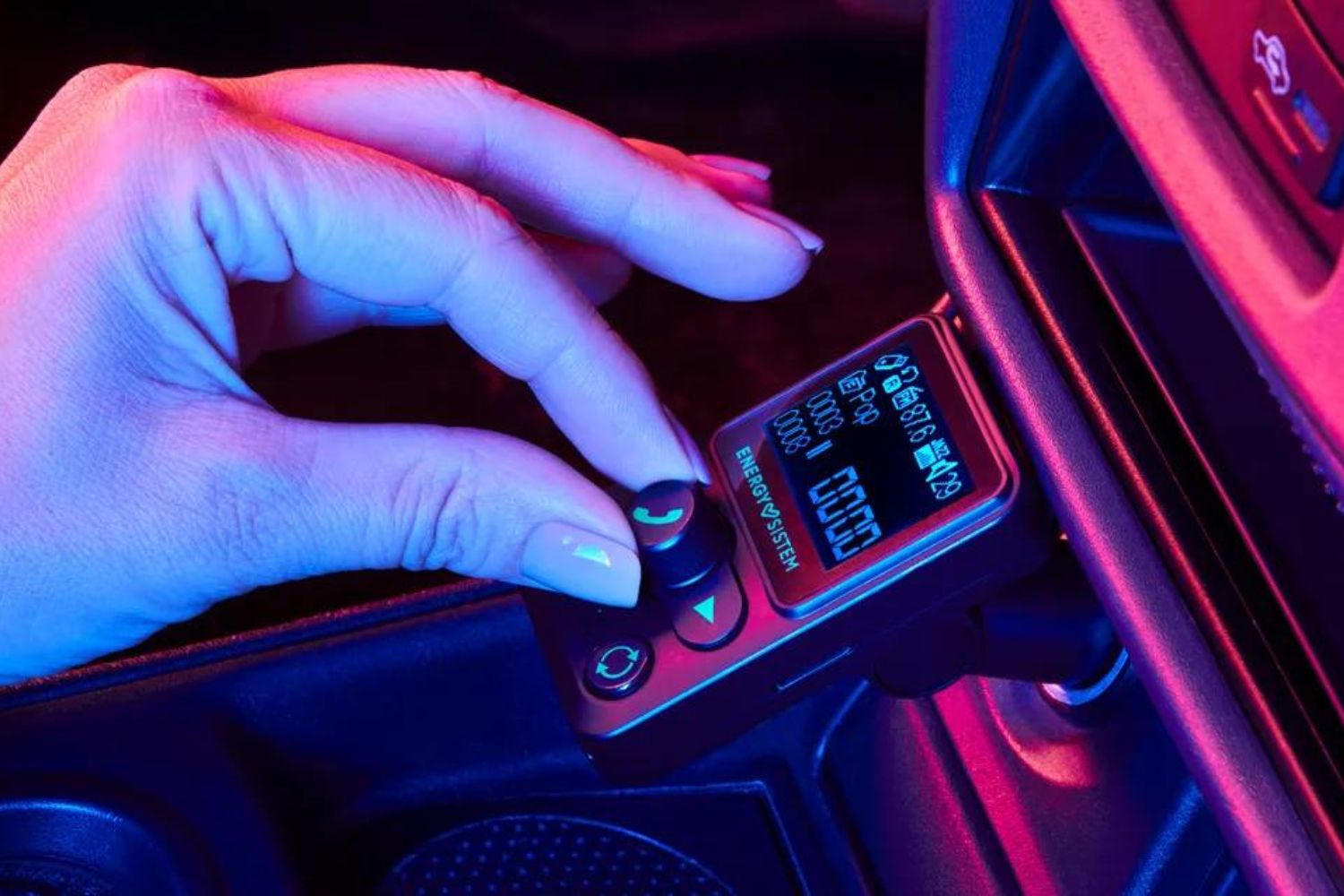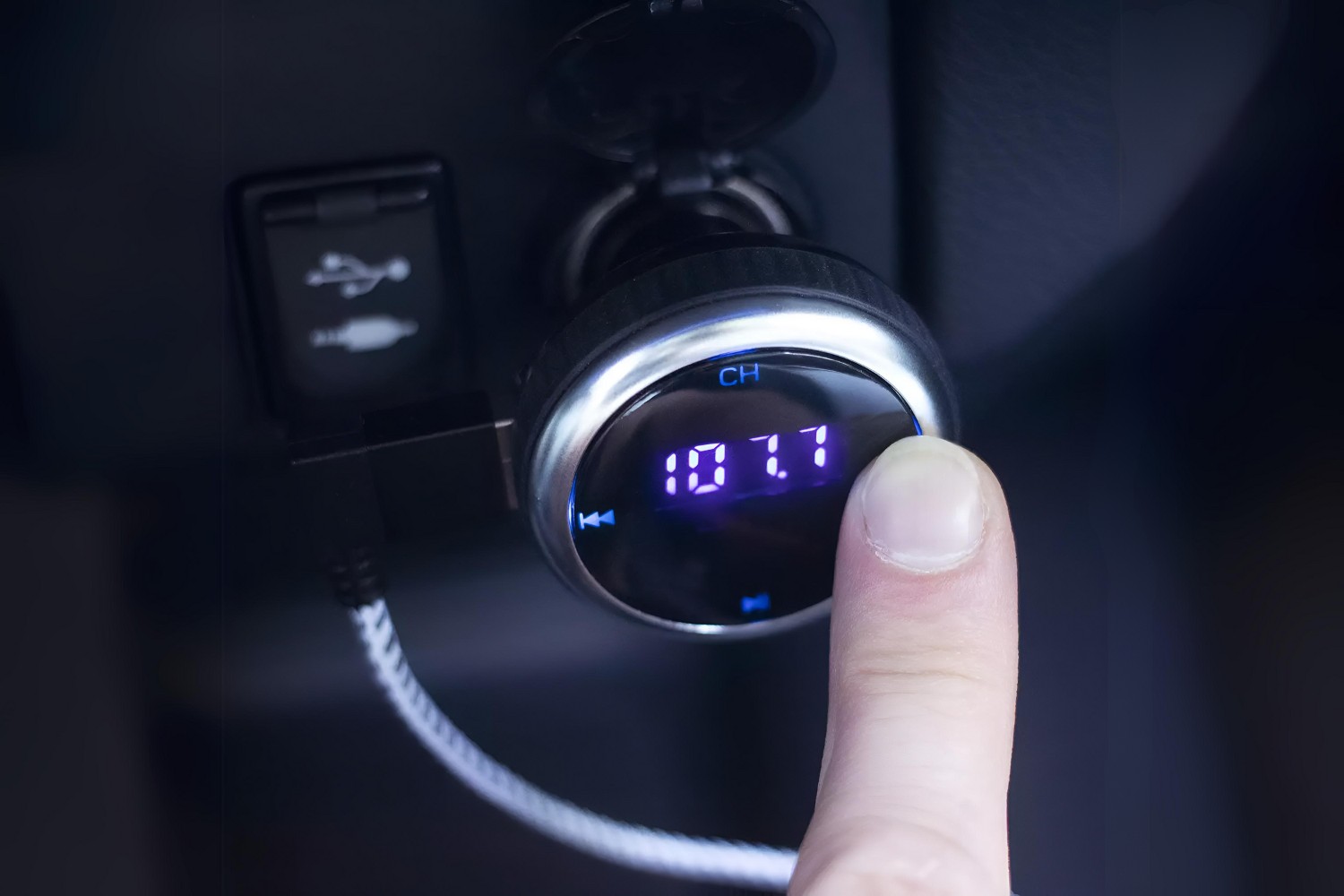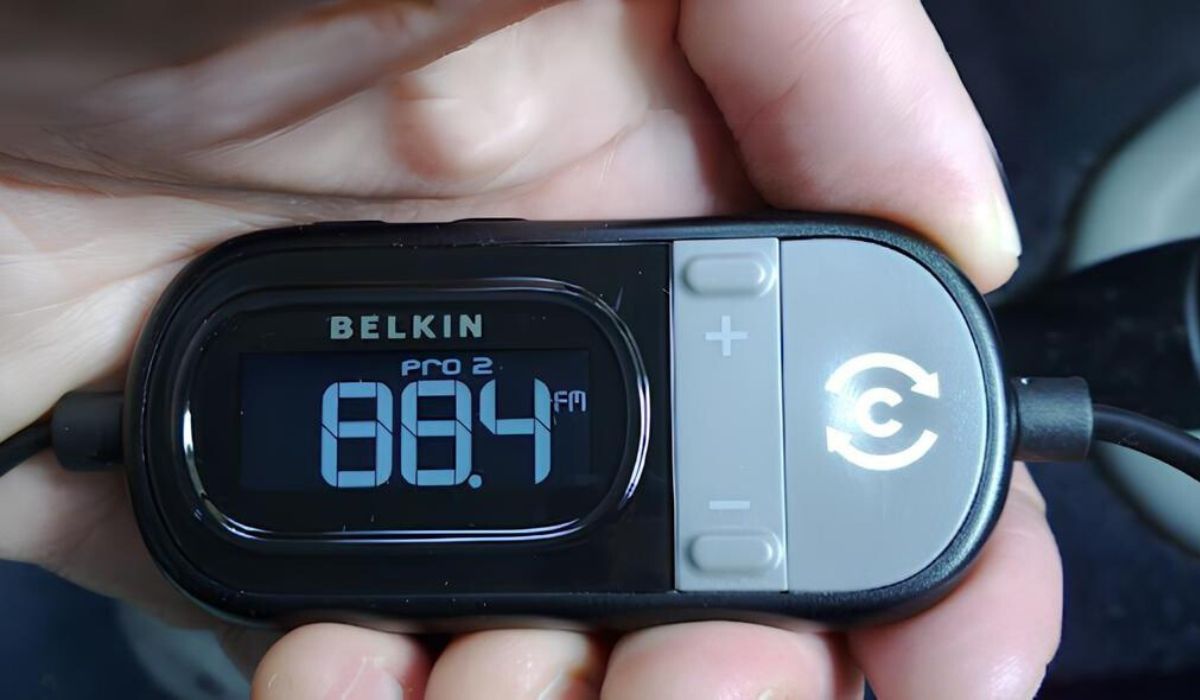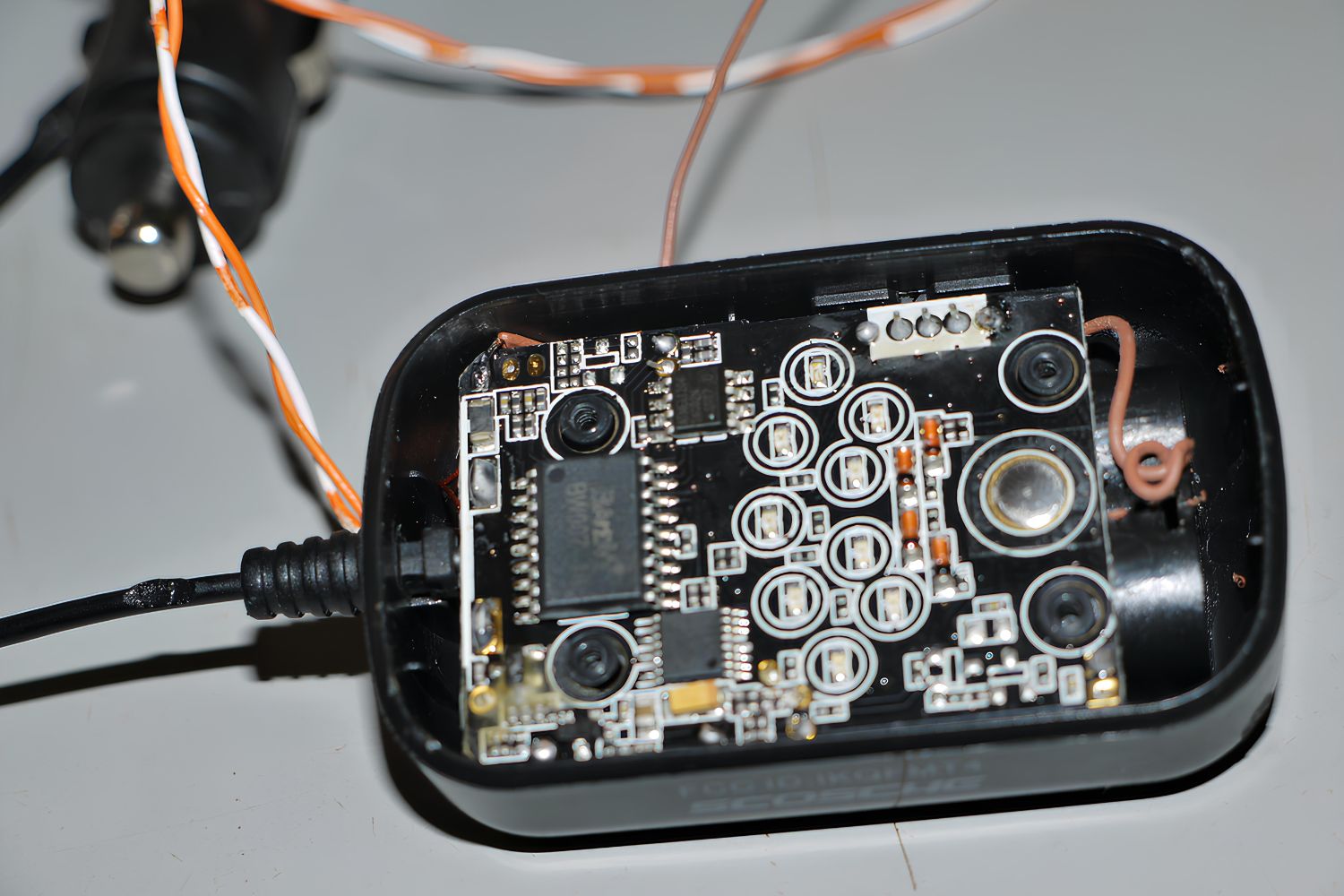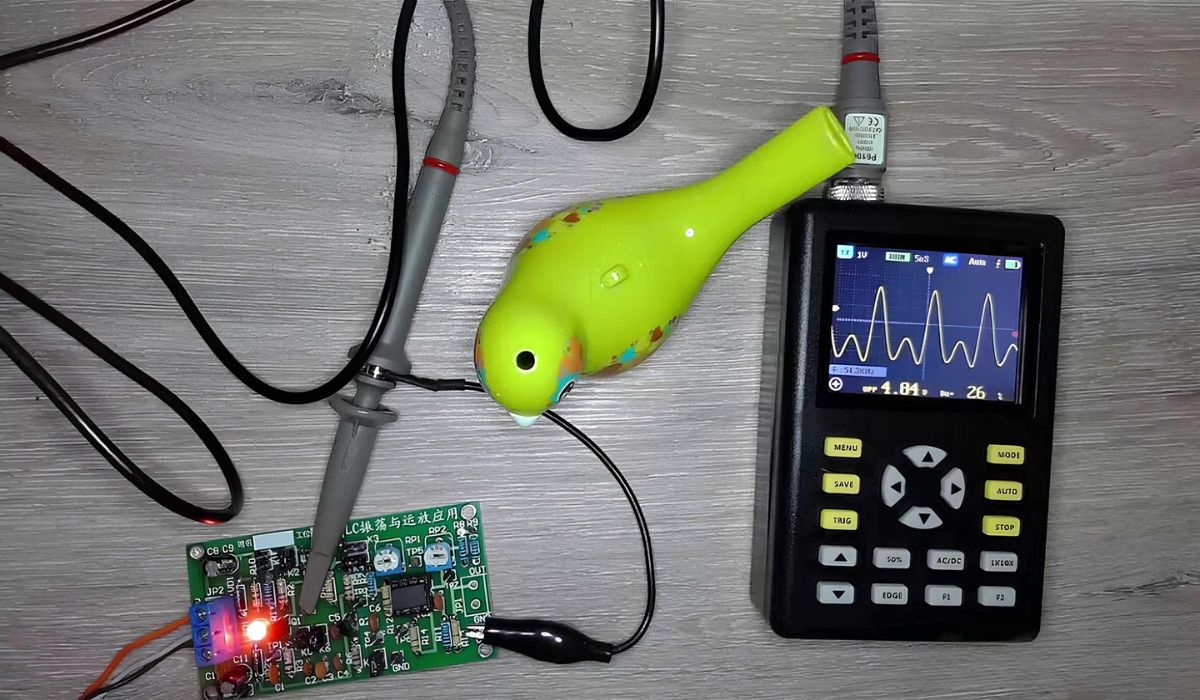Introduction
In this digital age, where music and podcasts are readily available at our fingertips, the need for seamless audio integration in our daily lives has become increasingly important. Whether it's for streaming music, listening to podcasts, or tuning in to local radio stations, the versatility of Android devices has made them indispensable companions for entertainment on the go. However, despite the myriad of features that modern smartphones offer, some users still crave the familiar experience of tuning in to FM radio stations, especially when driving or in areas with limited internet connectivity.
This is where FM transmitters come into play, offering a bridge between the traditional FM radio experience and the convenience of modern Android devices. By utilizing FM transmitters, users can broadcast audio from their Android devices directly to nearby FM radios, providing a seamless and nostalgic listening experience. Whether it's for amplifying music, streaming podcasts, or even using navigation apps with audio prompts, FM transmitters offer a versatile solution for integrating Android devices with FM radio.
Understanding the functionality, compatibility, and setup of FM transmitters with Android devices is crucial for those seeking to enhance their audio experience on the go. This guide aims to provide comprehensive insights into the world of FM transmitters, shedding light on their compatibility with Android devices and offering practical tips for seamless integration. Whether you're a music enthusiast, a podcast aficionado, or simply looking to explore new ways to enjoy audio content, this guide will equip you with the knowledge needed to leverage FM transmitters with your Android device effectively. So, let's delve into the world of Android broadcasting and discover the possibilities that FM transmitters unlock for your audio experience.
Understanding FM Transmitters
FM transmitters are compact electronic devices designed to broadcast audio signals over FM radio frequencies. These devices serve as a conduit for transmitting audio from various sources, such as smartphones, MP3 players, and other audio playback devices, to nearby FM radios. By leveraging FM transmitters, users can effectively transform their Android devices into miniature broadcasting stations, enabling them to wirelessly transmit audio to FM receivers within a limited range.
The operation of FM transmitters revolves around the principle of modulating audio signals onto specific FM radio frequencies. When an audio source is connected to the FM transmitter, it modulates the audio signal onto an FM frequency, effectively turning the FM transmitter into a micro-broadcasting station. This allows nearby FM radios to tune into the transmitted frequency and receive the audio signal, thus enabling users to listen to their preferred audio content through FM radio speakers.
FM transmitters typically operate within a specific frequency range, often within the commercial FM band (87.5 to 108.0 MHz). Some advanced FM transmitters offer adjustable frequency settings, allowing users to select an optimal frequency for transmission, especially in areas with crowded FM radio spectrums.
Moreover, FM transmitters are equipped with built-in antennas that emit the modulated FM signals, ensuring a reliable and consistent broadcast range. The broadcast range of FM transmitters can vary based on the device's power output, antenna design, and environmental factors. Generally, FM transmitters are suitable for transmitting audio within a limited radius, making them ideal for personal or localized broadcasting applications.
In the context of Android devices, FM transmitters offer a practical solution for users seeking to integrate their smartphones with FM radio systems. Whether it's for streaming music, listening to podcasts, or utilizing navigation apps, FM transmitters enable seamless audio transmission from Android devices to nearby FM radios, enhancing the overall audio experience for users on the go.
Understanding the underlying functionality and capabilities of FM transmitters is essential for harnessing their potential with Android devices. By comprehending the intricacies of FM transmission technology, users can leverage FM transmitters to expand their audio connectivity options and enjoy a versatile audio broadcasting experience with their Android devices.
Compatibility with Android Devices
FM transmitters are designed to be compatible with a wide range of devices, including Android smartphones and tablets. The compatibility of FM transmitters with Android devices stems from the universal audio connectivity features present in most modern Android devices. These devices are equipped with standard audio output interfaces, such as the headphone jack or USB-C port, which serve as the primary connection points for linking Android devices with FM transmitters.
The widespread adoption of the 3.5mm headphone jack in earlier Android devices facilitated seamless connectivity with FM transmitters, as users could directly plug the FM transmitter into the headphone jack, establishing a direct audio link between the Android device and the FM transmitter. However, with the gradual transition towards USB-C and wireless audio technologies in contemporary Android devices, FM transmitter manufacturers have adapted to these changes by offering versatile connectivity options.
Modern FM transmitters often feature USB-C compatibility, allowing users to connect them directly to USB-C equipped Android devices for audio transmission. Additionally, some FM transmitters leverage Bluetooth technology, enabling wireless pairing with Android devices for convenient and cable-free audio broadcasting. This adaptability ensures that users with diverse Android devices can seamlessly integrate FM transmitters into their audio setups, regardless of the device's audio connectivity standards.
Furthermore, the compatibility of FM transmitters with Android devices extends to the software level, where the audio output settings and signal modulation capabilities of Android devices play a crucial role in ensuring optimal transmission quality. Android's flexible audio output settings enable users to adjust volume levels, equalization settings, and audio balance, ensuring that the transmitted audio signals maintain high fidelity and clarity throughout the broadcasting process.
In essence, the compatibility of FM transmitters with Android devices is rooted in the versatile audio connectivity options present in Android hardware, coupled with the adaptability of FM transmitter technologies to accommodate evolving audio interface standards. This compatibility empowers Android users to harness the broadcasting capabilities of FM transmitters, enabling them to enjoy a seamless and immersive audio experience across various Android devices.
By understanding the compatibility between FM transmitters and Android devices, users can confidently explore the integration of FM transmission technology into their audio setups, unlocking new possibilities for broadcasting audio content from their Android devices to nearby FM radios.
Setting Up an FM Transmitter with Your Android Device
Setting up an FM transmitter with your Android device is a straightforward process that involves a few simple steps to establish a seamless audio connection between your smartphone and nearby FM radios. Whether you're looking to stream music, listen to podcasts, or utilize navigation apps with audio prompts, the following guide will walk you through the process of setting up an FM transmitter with your Android device.
-
Selecting an FM Transmitter: Begin by selecting a compatible FM transmitter for your Android device. Ensure that the FM transmitter supports the audio connectivity standards of your Android device, whether it's the 3.5mm headphone jack, USB-C port, or Bluetooth wireless connectivity. Additionally, consider the broadcast range and frequency adjustment capabilities of the FM transmitter to cater to your broadcasting needs effectively.
-
Connecting the FM Transmitter: If your Android device features a 3.5mm headphone jack, simply plug the FM transmitter into the headphone jack to establish a direct audio connection. For devices with USB-C ports, connect the FM transmitter using a USB-C to 3.5mm adapter or opt for a USB-C compatible FM transmitter for direct connectivity. In the case of Bluetooth-enabled FM transmitters, pair the transmitter with your Android device via Bluetooth settings for wireless audio transmission.
-
Selecting an Optimal Frequency: Once the FM transmitter is connected to your Android device, select an optimal FM frequency for broadcasting. It is advisable to choose a frequency that is relatively clear of local radio stations to minimize interference and ensure a stable broadcasting experience. Some FM transmitters feature frequency adjustment controls, allowing users to fine-tune the broadcasting frequency for optimal performance.
-
Testing the Transmission: After selecting the broadcasting frequency, play audio content on your Android device to test the transmission. Ensure that the FM radio is tuned to the selected frequency and adjust the volume levels on both the Android device and the FM radio for balanced audio output. Verify the clarity and stability of the transmitted audio to ensure a satisfactory broadcasting experience.
-
Optimizing Audio Settings: To enhance the audio quality during transmission, consider adjusting the audio output settings on your Android device. Fine-tune the equalization settings, volume levels, and audio balance to optimize the transmitted audio for an immersive listening experience on FM radios.
By following these steps, you can seamlessly set up an FM transmitter with your Android device, unlocking the potential to broadcast audio content to nearby FM radios. Whether you're driving, hosting outdoor events, or simply seeking a nostalgic FM radio experience, integrating an FM transmitter with your Android device offers a versatile solution for amplifying your audio connectivity options on the go.
Tips for Using FM Transmitters with Android Devices
-
Optimal Placement: When using an FM transmitter in a vehicle, consider the placement of the device for optimal signal transmission. Position the FM transmitter close to the vehicle's audio system or radio unit to minimize signal interference and ensure a strong and clear broadcast. Additionally, avoid obstructing the FM transmitter with metallic objects or other electronic devices that may disrupt the transmission quality.
-
Frequency Selection: Prioritize selecting an FM frequency that is relatively clear of local radio stations to avoid signal overlap and interference. Experiment with different frequencies to identify the most suitable channel for broadcasting, especially in urban areas with densely populated FM spectrums. Fine-tuning the frequency can significantly enhance the broadcasting stability and audio clarity, ensuring a consistent listening experience for FM radio users.
-
Environmental Considerations: Be mindful of the surrounding environment when using an FM transmitter, as external factors such as buildings, terrain, and electromagnetic interference can impact the broadcast range and signal strength. In outdoor settings, consider the line of sight between the FM transmitter and FM radios to optimize signal propagation. Additionally, minimize potential sources of electromagnetic interference to maintain a reliable broadcasting experience.
-
Power Source and Battery Life: If the FM transmitter requires a power source, ensure that it is adequately powered to sustain continuous broadcasting. For battery-powered FM transmitters, monitor the battery life to prevent interruptions during audio transmission. Consider using power banks or car chargers to maintain a consistent power supply for prolonged broadcasting sessions, especially during extended road trips or outdoor events.
-
Audio Content Selection: When broadcasting audio from your Android device, curate a diverse selection of content to cater to different listener preferences. Whether it's creating custom playlists, streaming live radio, or sharing podcasts, offering a varied audio experience can appeal to a broader audience of FM radio listeners. Additionally, consider adjusting the audio output settings on your Android device to optimize the transmitted audio for enhanced clarity and fidelity.
-
Compliance with Local Regulations: Familiarize yourself with local regulations and guidelines regarding FM broadcasting to ensure compliance with applicable laws. Some regions may have specific restrictions on FM transmission power, frequency usage, and broadcasting practices. By adhering to regulatory requirements, you can engage in responsible FM broadcasting while respecting the legal framework governing radio frequency usage.
-
Maintenance and Upkeep: Regularly inspect and maintain the FM transmitter to uphold its performance and longevity. Clean the device's connectors, antennas, and interface ports to prevent signal degradation and ensure consistent broadcasting quality. Additionally, stay informed about firmware updates or software enhancements for the FM transmitter to leverage new features and improvements for an enhanced broadcasting experience.
By incorporating these tips into your usage of FM transmitters with Android devices, you can optimize the broadcasting experience, mitigate potential challenges, and elevate the audio connectivity between your Android device and FM radios. Whether it's for personal enjoyment, event hosting, or community engagement, leveraging FM transmitters with Android devices opens up a world of possibilities for seamless audio integration and broadcasting.
Conclusion
In conclusion, the integration of FM transmitters with Android devices presents a compelling avenue for enhancing audio connectivity and broadcasting capabilities in various settings. By delving into the world of FM transmitters, users can bridge the gap between modern smartphone technology and the timeless appeal of FM radio, unlocking new dimensions of audio integration and broadcasting on the go.
The versatile functionality of FM transmitters empowers Android users to seamlessly transmit audio content from their devices to nearby FM radios, offering a nostalgic yet innovative approach to audio broadcasting. Whether it's for amplifying music during road trips, sharing podcasts at outdoor gatherings, or delivering audio prompts from navigation apps, FM transmitters serve as versatile conduits for extending the reach of Android devices to FM radio systems.
The compatibility between FM transmitters and Android devices underscores the adaptability of modern audio technologies, ensuring that users with diverse Android devices can leverage FM transmission capabilities with ease. From traditional 3.5mm headphone jack connectivity to USB-C and Bluetooth integration, FM transmitters cater to a wide spectrum of Android devices, enabling seamless audio transmission and broadcasting.
Moreover, the setup process for FM transmitters with Android devices is straightforward, requiring minimal configuration to establish a robust audio connection. By selecting optimal frequencies, testing transmission quality, and optimizing audio settings, users can harness the full potential of FM transmitters, transforming their Android devices into portable broadcasting stations for FM radios.
As users explore the realm of FM transmitters and Android broadcasting, it's essential to consider practical tips for maximizing the broadcasting experience. From prioritizing optimal placement and frequency selection to addressing environmental factors and compliance with local regulations, these tips serve as valuable guidelines for optimizing FM transmission with Android devices.
Ultimately, the convergence of FM transmitters and Android devices represents a harmonious blend of traditional and contemporary audio technologies, offering users a seamless and immersive audio experience. Whether it's reliving the nostalgia of FM radio or exploring new avenues for audio integration, the synergy between FM transmitters and Android devices paves the way for innovative broadcasting possibilities in diverse scenarios.
In essence, the journey of leveraging FM transmitters with Android devices transcends conventional audio connectivity, fostering a dynamic fusion of technology and nostalgia. By embracing the capabilities of FM transmitters, users can embark on a captivating audio broadcasting adventure, enriching their audio experiences and expanding the reach of their Android devices in the realm of FM radio connectivity.







